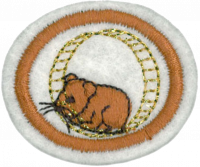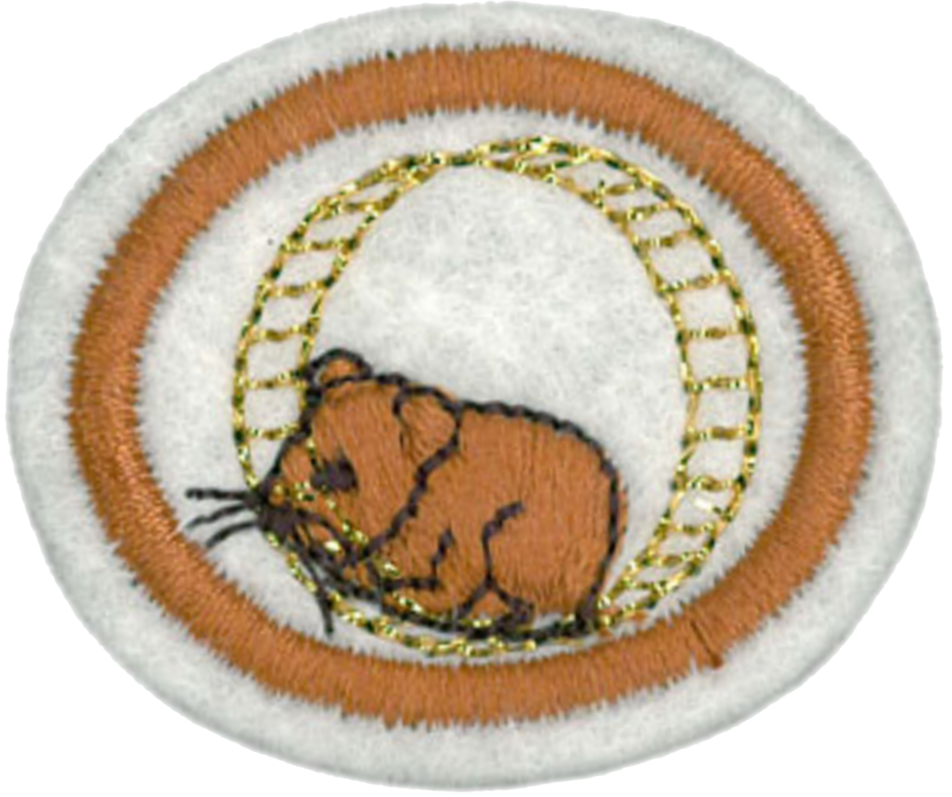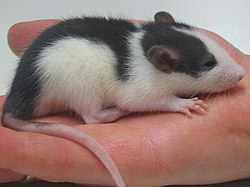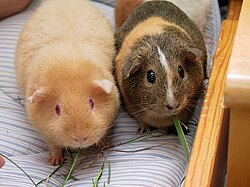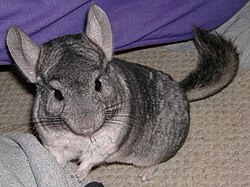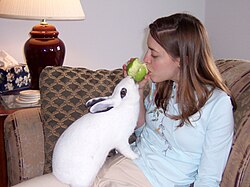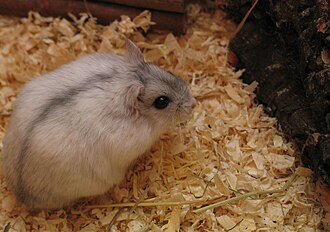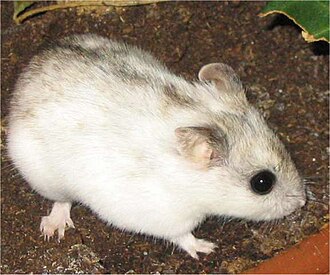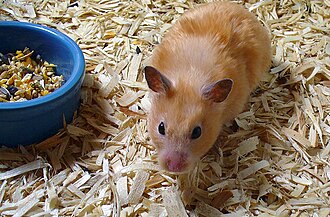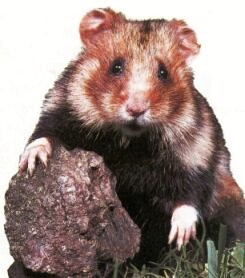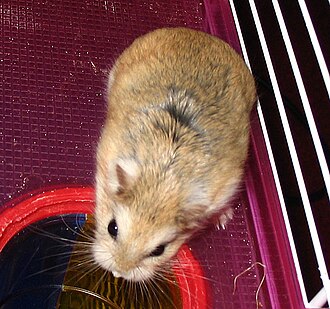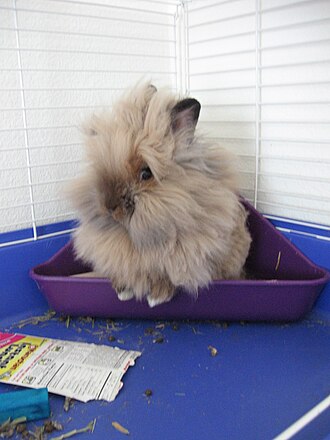Difference between revisions of "AY Honors/Small Mammal Pets/Answer Key"
Jomegat bot (talk | contribs) (Bot: Automated import of articles *** existing text overwritten ***) |
m (- Category of AYHAB) |
||
| (5 intermediate revisions by 2 users not shown) | |||
| Line 1: | Line 1: | ||
| − | + | {{HonorSubpage}} | |
| − | + | <!--{{Honor_Master|honor=Small Mammal Pets|master=Naturalist|group=Domestic}}--> | |
| − | {{ | + | <!--{{Honor_Master|honor=Small Mammal Pets|master=Zoology|group=Domestic}}--> |
| − | |||
| − | |||
| − | |||
| − | |||
| − | |||
| − | |||
| − | |||
| − | }} | ||
| − | {{Honor_Master|honor=Small Mammal Pets|master=Naturalist|group=Domestic}} | ||
| − | {{Honor_Master|honor=Small Mammal Pets|master=Zoology|group=Domestic}} | ||
| − | |||
| − | |||
<section begin="Body" /> | <section begin="Body" /> | ||
{{ansreq|page={{#titleparts:{{PAGENAME}}|2|1}}|num=1}} | {{ansreq|page={{#titleparts:{{PAGENAME}}|2|1}}|num=1}} | ||
| − | <noinclude><translate></noinclude> | + | <noinclude><translate><!--T:72--> |
| − | <!-- 1. Have the Mammal Honor. | + | </noinclude> |
| + | <!-- 1. Have the Mammal Honor. --> | ||
{{honor_prerequisite|category=Nature|honor=Mammals}} | {{honor_prerequisite|category=Nature|honor=Mammals}} | ||
| + | <!--T:73--> | ||
<noinclude></translate></noinclude> | <noinclude></translate></noinclude> | ||
{{CloseReq}} <!-- 1 --> | {{CloseReq}} <!-- 1 --> | ||
{{ansreq|page={{#titleparts:{{PAGENAME}}|2|1}}|num=2}} | {{ansreq|page={{#titleparts:{{PAGENAME}}|2|1}}|num=2}} | ||
| − | <noinclude><translate></noinclude> | + | <noinclude><translate><!--T:74--> |
| − | <!-- 2. Keep a small mammal pet for at least six months. (Dogs and cats are not included as small mammal pets.) For a suggested list of pets to choose from, see #5 below. | + | </noinclude> |
| − | Keeping a pet represents a tremendous commitment on the part of the owner. | + | <!-- 2. Keep a small mammal pet for at least six months. (Dogs and cats are not included as small mammal pets.) For a suggested list of pets to choose from, see #5 below. --> |
| + | Keeping a pet represents a tremendous commitment on the part of the owner. Pets rely on their owners for their most basic needs, and if the owner is neglectful, or "just doesn't feel like" taking care of the animal, it will suffer. Some small mammal pets have a lifespan of only a couple of years, which is fairly short as compared to other pets. Because of the limited lifespan, a small mammal as a first pet would be a good choice for a parent to test a child's commitment. However, that should not relieve a child (or any pet owner) of responsibly caring for the animal. | ||
<!--T:3--> | <!--T:3--> | ||
| − | If you realistically believe you can make a multi-year commitment to a small mammal pet, then you should go for it. | + | If you realistically believe you can make a multi-year commitment to a small mammal pet, then you should go for it. Just make sure you have your parent's and landlord's permission. Having a pet is not only an enjoyable experience, it may help you grow as a person. |
| + | <!--T:75--> | ||
<noinclude></translate></noinclude> | <noinclude></translate></noinclude> | ||
{{CloseReq}} <!-- 2 --> | {{CloseReq}} <!-- 2 --> | ||
{{ansreq|page={{#titleparts:{{PAGENAME}}|2|1}}|num=3}} | {{ansreq|page={{#titleparts:{{PAGENAME}}|2|1}}|num=3}} | ||
| − | <noinclude><translate></noinclude> | + | <noinclude><translate><!--T:76--> |
| − | <!-- 3. Complete one of the following: <br> a. If you currently have a small mammal pet, keep a record of the care for your small mammal for one month. Include in your record when it is watered, fed, and when its cage is cleaned. | + | </noinclude> |
| − | {{: | + | <!-- 3. Complete one of the following: <br> a. If you currently have a small mammal pet, keep a record of the care for your small mammal for one month. Include in your record when it is watered, fed, and when its cage is cleaned. <br> b. If you do not currently have a small mammal pet, but you have kept one for at least six months, “babysit” someone else’s small mammal pet for at least one week. Record the care that was required. --> |
| + | {{:AY Honors/Pet care records}} | ||
| + | <!--T:77--> | ||
<noinclude></translate></noinclude> | <noinclude></translate></noinclude> | ||
{{CloseReq}} <!-- 3 --> | {{CloseReq}} <!-- 3 --> | ||
{{ansreq|page={{#titleparts:{{PAGENAME}}|2|1}}|num=4}} | {{ansreq|page={{#titleparts:{{PAGENAME}}|2|1}}|num=4}} | ||
| − | <noinclude><translate></noinclude> | + | <noinclude><translate><!--T:78--> |
| + | </noinclude> | ||
<!-- 4. Give an oral report (at least 3 minutes) on what you have observed about your small mammal pet. Include favorite foods, some of its habits, when it is most active, and favorite story about pet, etc. --> | <!-- 4. Give an oral report (at least 3 minutes) on what you have observed about your small mammal pet. Include favorite foods, some of its habits, when it is most active, and favorite story about pet, etc. --> | ||
| − | This report could be given during Sabbath School, during club worship, or told as a children's story during church. | + | This report could be given during Sabbath School, during club worship, or told as a children's story during church. It can also be given to your unit during a club meeting. Use the records kept in the previous requirement to help you prepare. Three minutes is not a very long report, so do not let that make you nervous. Once you start talking about your pet, the three minutes will pass before yo uknow it. |
| + | <!--T:79--> | ||
<noinclude></translate></noinclude> | <noinclude></translate></noinclude> | ||
{{CloseReq}} <!-- 4 --> | {{CloseReq}} <!-- 4 --> | ||
{{ansreq|page={{#titleparts:{{PAGENAME}}|2|1}}|num=5}} | {{ansreq|page={{#titleparts:{{PAGENAME}}|2|1}}|num=5}} | ||
| − | <noinclude><translate></noinclude> | + | <noinclude><translate><!--T:80--> |
| + | </noinclude> | ||
<!-- 5. Complete the following: --> | <!-- 5. Complete the following: --> | ||
<noinclude></translate></noinclude> | <noinclude></translate></noinclude> | ||
{{ansreq|page={{#titleparts:{{PAGENAME}}|2|1}}|num=5a}} <!--T:6--> | {{ansreq|page={{#titleparts:{{PAGENAME}}|2|1}}|num=5a}} <!--T:6--> | ||
| − | <noinclude><translate></noinclude> | + | <noinclude><translate><!--T:81--> |
| + | </noinclude> | ||
<noinclude></translate></noinclude> | <noinclude></translate></noinclude> | ||
{{ansreq|page={{#titleparts:{{PAGENAME}}|2|1}}|num=5ai|dispreq=i}} | {{ansreq|page={{#titleparts:{{PAGENAME}}|2|1}}|num=5ai|dispreq=i}} | ||
| − | <noinclude><translate></noinclude> | + | <noinclude><translate><!--T:82--> |
| + | </noinclude> | ||
[[Image:Phodopus roborovskii sand.JPG|thumb|200px|Hamster]] | [[Image:Phodopus roborovskii sand.JPG|thumb|200px|Hamster]] | ||
| − | Hamsters are stout-bodied, with tails much shorter than body length and have small furry ears, short stocky legs, and wide feet. Their thick, silky fur, which can be long or short, can be black, grey, white, brown, buff, yellow, "sapphire" or red depending on the species, or a mix of any of those colors. | + | Hamsters are stout-bodied, with tails much shorter than body length and have small furry ears, short stocky legs, and wide feet. Their thick, silky fur, which can be long or short, can be black, grey, white, brown, buff, yellow, "sapphire" or red depending on the species, or a mix of any of those colors. Dwarf desert hamsters (genus Phodopus) are the smallest, with bodies 5 to 10 cm (about 2 to 4 inches) long; the largest is the common hamster (Cricetus cricetus), measuring up to 34 cm long, not including a short tail of up to 4 cm. The tail is often difficult to see; usually it is not very long, and on a long haired hamster it is barely visible. |
{{clear}} | {{clear}} | ||
<noinclude></translate></noinclude> | <noinclude></translate></noinclude> | ||
{{CloseReq}} <!-- 5ai --> | {{CloseReq}} <!-- 5ai --> | ||
{{ansreq|page={{#titleparts:{{PAGENAME}}|2|1}}|num=5aii|dispreq=ii}} | {{ansreq|page={{#titleparts:{{PAGENAME}}|2|1}}|num=5aii|dispreq=ii}} | ||
| − | <noinclude><translate></noinclude> | + | <noinclude><translate><!--T:83--> |
| + | </noinclude> | ||
[[Image:Gerbil.JPG|thumb|200px|Gerbil]] | [[Image:Gerbil.JPG|thumb|200px|Gerbil]] | ||
| − | Gerbils are typically between six and twelve inches (150 to 300 mm) long, including the tail which makes up approximately one half of their total length. One species however, the Great Gerbil, or Rhombomys opimus, originally native to Turkmenistan, can grow to more than 16 inches (400 mm) in length. | + | Gerbils are typically between six and twelve inches (150 to 300 mm) long, including the tail which makes up approximately one half of their total length. One species however, the Great Gerbil, or Rhombomys opimus, originally native to Turkmenistan, can grow to more than 16 inches (400 mm) in length. It is illegal to purchase, import or keep a gerbil as a pet in the U.S. State of California. |
{{clear}} | {{clear}} | ||
| + | <!--T:84--> | ||
<noinclude></translate></noinclude> | <noinclude></translate></noinclude> | ||
{{CloseReq}} <!-- 5aii --> | {{CloseReq}} <!-- 5aii --> | ||
{{ansreq|page={{#titleparts:{{PAGENAME}}|2|1}}|num=5aiii|dispreq=iii}} <!--T:7--> | {{ansreq|page={{#titleparts:{{PAGENAME}}|2|1}}|num=5aiii|dispreq=iii}} <!--T:7--> | ||
| − | <noinclude><translate></noinclude> | + | <noinclude><translate><!--T:85--> |
| + | </noinclude> | ||
[[Image:Junge hausratte.jpg|thumb|200px|A young pet rat]] | [[Image:Junge hausratte.jpg|thumb|200px|A young pet rat]] | ||
The length can be up to 25 cm (10 in), with the tail a further 25 cm (10 in), the same length as the body. Adult body weight averages 350 g (12 oz) in males and about 250 g (9 oz) in females, but a very large individual can reach 500 g (18 oz). A rat's tail is for the most part hairless. | The length can be up to 25 cm (10 in), with the tail a further 25 cm (10 in), the same length as the body. Adult body weight averages 350 g (12 oz) in males and about 250 g (9 oz) in females, but a very large individual can reach 500 g (18 oz). A rat's tail is for the most part hairless. | ||
{{clear}} | {{clear}} | ||
| + | <!--T:86--> | ||
<noinclude></translate></noinclude> | <noinclude></translate></noinclude> | ||
{{CloseReq}} <!-- 5aiii --> | {{CloseReq}} <!-- 5aiii --> | ||
{{ansreq|page={{#titleparts:{{PAGENAME}}|2|1}}|num=5aiv|dispreq=iv}} <!--T:8--> | {{ansreq|page={{#titleparts:{{PAGENAME}}|2|1}}|num=5aiv|dispreq=iv}} <!--T:8--> | ||
| − | <noinclude><translate></noinclude> | + | <noinclude><translate><!--T:87--> |
| + | </noinclude> | ||
[[Image:Fancy Mouse.jpg|thumb|200px|A tame, black fancy mouse]] | [[Image:Fancy Mouse.jpg|thumb|200px|A tame, black fancy mouse]] | ||
Fancy mice is a term to describe mice that have been selectively bred for pet or for show. They can vary greatly in size, from small pet mice that are approximately 16–18 cm (6.3–7.1 in) long from nose to the tip of the tail, to show mice that measure 30 cm (12 in) nose to tail. Pet mice weigh about 25–40 g (0.88–1.4 oz) but large show mice can weigh up to 100 g (3.5 oz). | Fancy mice is a term to describe mice that have been selectively bred for pet or for show. They can vary greatly in size, from small pet mice that are approximately 16–18 cm (6.3–7.1 in) long from nose to the tip of the tail, to show mice that measure 30 cm (12 in) nose to tail. Pet mice weigh about 25–40 g (0.88–1.4 oz) but large show mice can weigh up to 100 g (3.5 oz). | ||
| Line 85: | Line 89: | ||
{{clear}} | {{clear}} | ||
| + | <!--T:88--> | ||
<noinclude></translate></noinclude> | <noinclude></translate></noinclude> | ||
{{CloseReq}} <!-- 5aiv --> | {{CloseReq}} <!-- 5aiv --> | ||
{{ansreq|page={{#titleparts:{{PAGENAME}}|2|1}}|num=5av|dispreq=v}} <!--T:10--> | {{ansreq|page={{#titleparts:{{PAGENAME}}|2|1}}|num=5av|dispreq=v}} <!--T:10--> | ||
| − | <noinclude><translate></noinclude> | + | <noinclude><translate><!--T:89--> |
| + | </noinclude> | ||
[[Image:Two_adult_Guinea_Pigs_(Cavia_porcellus).jpg|thumb|200px|Guinea pigs]] | [[Image:Two_adult_Guinea_Pigs_(Cavia_porcellus).jpg|thumb|200px|Guinea pigs]] | ||
Guinea pigs are large for rodents, weighing between 700 and 1200g (1.5-2.5 pounds), and measuring between 20 and 25 cm (8–10 inches) in length. They typically live an average of four to five years, but may live as long as eight years. According to the 2006 Guinness Book of Records the longest living guinea pig survived 14 years, 10.5 months | Guinea pigs are large for rodents, weighing between 700 and 1200g (1.5-2.5 pounds), and measuring between 20 and 25 cm (8–10 inches) in length. They typically live an average of four to five years, but may live as long as eight years. According to the 2006 Guinness Book of Records the longest living guinea pig survived 14 years, 10.5 months | ||
| Line 95: | Line 101: | ||
In Western societies, the guinea pig has enjoyed widespread popularity as a household pet since its introduction by European traders in the 16th century. Their docile nature, their responsiveness to handling and feeding, and the relative ease of caring for them, continue to make the guinea pig a popular pet. Organizations devoted to competitive breeding of guinea pigs have been formed worldwide, and many specialized breeds of guinea pig, with varying coat colors and compositions, are cultivated by breeders. | In Western societies, the guinea pig has enjoyed widespread popularity as a household pet since its introduction by European traders in the 16th century. Their docile nature, their responsiveness to handling and feeding, and the relative ease of caring for them, continue to make the guinea pig a popular pet. Organizations devoted to competitive breeding of guinea pigs have been formed worldwide, and many specialized breeds of guinea pig, with varying coat colors and compositions, are cultivated by breeders. | ||
| + | <!--T:90--> | ||
<noinclude></translate></noinclude> | <noinclude></translate></noinclude> | ||
{{CloseReq}} <!-- 5av --> | {{CloseReq}} <!-- 5av --> | ||
{{ansreq|page={{#titleparts:{{PAGENAME}}|2|1}}|num=5avi|dispreq=vi}} <!--T:12--> | {{ansreq|page={{#titleparts:{{PAGENAME}}|2|1}}|num=5avi|dispreq=vi}} <!--T:12--> | ||
| − | <noinclude><translate></noinclude> | + | <noinclude><translate><!--T:91--> |
| + | </noinclude> | ||
[[Image:LittleGuy.jpg|thumb|200px|Chincilla]] | [[Image:LittleGuy.jpg|thumb|200px|Chincilla]] | ||
| − | Chinchillas are rabbit-sized rodents native to the Andes mountains in South America. | + | Chinchillas are rabbit-sized rodents native to the Andes mountains in South America. They have large ears and long, bushy tails. |
<!--T:13--> | <!--T:13--> | ||
Domestic chinchillas can be kept as pets. Chinchillas are active at dusk and at dawn. They typically do not like to be disturbed during the day, which may make them less favorable as pets to some people. Chinchillas are naturally very skittish creatures and generally do not like to be held, although they can become very attached to their owners if they grow up without a cage mate. Because of their high-strung disposition, they are not usually considered to be good pets for small children. However, chinchillas can be very friendly animals if sufficiently acclimated to human touch as kits, making them excellent pets for patient owners. | Domestic chinchillas can be kept as pets. Chinchillas are active at dusk and at dawn. They typically do not like to be disturbed during the day, which may make them less favorable as pets to some people. Chinchillas are naturally very skittish creatures and generally do not like to be held, although they can become very attached to their owners if they grow up without a cage mate. Because of their high-strung disposition, they are not usually considered to be good pets for small children. However, chinchillas can be very friendly animals if sufficiently acclimated to human touch as kits, making them excellent pets for patient owners. | ||
| + | <!--T:92--> | ||
<noinclude></translate></noinclude> | <noinclude></translate></noinclude> | ||
{{CloseReq}} <!-- 5avi --> | {{CloseReq}} <!-- 5avi --> | ||
{{ansreq|page={{#titleparts:{{PAGENAME}}|2|1}}|num=5avii|dispreq=vii}} <!--T:14--> | {{ansreq|page={{#titleparts:{{PAGENAME}}|2|1}}|num=5avii|dispreq=vii}} <!--T:14--> | ||
| − | <noinclude><translate></noinclude> | + | <noinclude><translate><!--T:93--> |
| + | </noinclude> | ||
[[Image:Rabbit sharing apple.jpg|thumb|200px|A pet rabbit sharing an apple with its owner]] | [[Image:Rabbit sharing apple.jpg|thumb|200px|A pet rabbit sharing an apple with its owner]] | ||
A house rabbit is a domestic rabbit kept as a pet for companionship, who lives inside the home with his owners. | A house rabbit is a domestic rabbit kept as a pet for companionship, who lives inside the home with his owners. | ||
{{clear}} | {{clear}} | ||
| + | <!--T:94--> | ||
<noinclude></translate></noinclude> | <noinclude></translate></noinclude> | ||
{{CloseReq}} <!-- 5avii --> | {{CloseReq}} <!-- 5avii --> | ||
{{ansreq|page={{#titleparts:{{PAGENAME}}|2|1}}|num=5aviii|dispreq=viii}} <!--T:15--> | {{ansreq|page={{#titleparts:{{PAGENAME}}|2|1}}|num=5aviii|dispreq=viii}} <!--T:15--> | ||
| − | <noinclude><translate></noinclude> | + | <noinclude><translate><!--T:95--> |
| + | </noinclude> | ||
[[Image:Mustela putorius furo.jpg|thumb|200px|Ferret]] | [[Image:Mustela putorius furo.jpg|thumb|200px|Ferret]] | ||
Domestic ferrets typically have brown, black, white, or mixed fur, have an average length of approximately 20 inches (51 cm) including a 5 inch (13 cm) tail, weigh about 2-4 pounds (1 kg), and have a natural lifespan of 7 to 10 years. | Domestic ferrets typically have brown, black, white, or mixed fur, have an average length of approximately 20 inches (51 cm) including a 5 inch (13 cm) tail, weigh about 2-4 pounds (1 kg), and have a natural lifespan of 7 to 10 years. | ||
| Line 128: | Line 140: | ||
<big>'''Note: If the list of domesticated small mammals above are not found in your area you may substitute local domesticated small mammals from your area.'''</big> | <big>'''Note: If the list of domesticated small mammals above are not found in your area you may substitute local domesticated small mammals from your area.'''</big> | ||
| + | <!--T:96--> | ||
<noinclude></translate></noinclude> | <noinclude></translate></noinclude> | ||
{{CloseReq}} <!-- 5aviii --> | {{CloseReq}} <!-- 5aviii --> | ||
{{CloseReq}} <!-- 5a --> | {{CloseReq}} <!-- 5a --> | ||
{{ansreq|page={{#titleparts:{{PAGENAME}}|2|1}}|num=5b}} <!--T:18--> | {{ansreq|page={{#titleparts:{{PAGENAME}}|2|1}}|num=5b}} <!--T:18--> | ||
| − | <noinclude><translate></noinclude> | + | <noinclude><translate><!--T:97--> |
| − | Ferrets, alone of the animals on this list are carnivores. | + | </noinclude> |
| + | Ferrets, alone of the animals on this list are carnivores. Because of this their care will differ from that of all the others here. If you selected a ferret, compare its care to any of the others. If you selected something else, compare its care to that of the ferret. | ||
| − | All of these pets need to have a supply of fresh water available to them at all times. | + | All of these pets need to have a supply of fresh water available to them at all times. Their cages should be kept clean, and they all require daily exercise. |
====Hamster==== <!--T:19--> | ====Hamster==== <!--T:19--> | ||
| − | {{ | + | {{AY Honors/Small Pet Care |
|name=Hamster | |name=Hamster | ||
| − | |cage=A hamster's cage should be at least two square feet or larger. | + | |cage=A hamster's cage should be at least two square feet or larger. All horizontal floor surfaces (including levels) should be solid. The walls and ceiling can be coated wire with a half-inch (or less) spacing between wires. Keep the cage clean! |
| − | |bedding=Aspen wood or paper-based bedding free from scents or oils. | + | |bedding=Aspen wood or paper-based bedding free from scents or oils. Aspen is the only type of wood-chip bedding can be used. Softwoods (pine, cedar, etc) and cat litter should be avoided. |
}} | }} | ||
====Gerbils==== | ====Gerbils==== | ||
| − | {{ | + | {{AY Honors/Small Pet Care |
|name=Gerbils | |name=Gerbils | ||
| − | |cage=Gerbils can be kept in a glass tank such as an aquarium. | + | |cage=Gerbils can be kept in a glass tank such as an aquarium. It should have a wire mesh top, and should allow for five gallons of capacity per gerbil. |
| − | |bedding=As with the hamster, the only safe wood-chip bedding is aspen. | + | |bedding=As with the hamster, the only safe wood-chip bedding is aspen. Pine and cedar are toxic to these animals. |
|food=Sunflower seeds, pumpkin seeds and peanuts are favorites of most gerbils, though they have individual preferences and too many sunflower seeds may result in illness. They also enjoy fruit peels such as orange and banana. In fact, gerbils will eat almost anything; dog biscuits and chews; rat food; rabbit food; guinea pig food; oats; various "special" treats from pet shops, which in fact were not appreciated nearly as much as some parsnip cores. Most weeds dubbed as safe for grazing animals like rabbits or guinea pigs can be eaten by gerbils as well. Pet gerbils will especially enjoy live crickets, grasshoppers, and locusts as food, tearing the insect apart and eating the juicy insides. It is good for you to feed your gerbil vegetables such as celery or carrots or an apple. Take care not to feed them too much of these foods as they contain a lot of moisture and can cause an upset stomach. | |food=Sunflower seeds, pumpkin seeds and peanuts are favorites of most gerbils, though they have individual preferences and too many sunflower seeds may result in illness. They also enjoy fruit peels such as orange and banana. In fact, gerbils will eat almost anything; dog biscuits and chews; rat food; rabbit food; guinea pig food; oats; various "special" treats from pet shops, which in fact were not appreciated nearly as much as some parsnip cores. Most weeds dubbed as safe for grazing animals like rabbits or guinea pigs can be eaten by gerbils as well. Pet gerbils will especially enjoy live crickets, grasshoppers, and locusts as food, tearing the insect apart and eating the juicy insides. It is good for you to feed your gerbil vegetables such as celery or carrots or an apple. Take care not to feed them too much of these foods as they contain a lot of moisture and can cause an upset stomach. | ||
|toys= | |toys= | ||
| Line 152: | Line 166: | ||
====Rats==== <!--T:20--> | ====Rats==== <!--T:20--> | ||
| − | {{ | + | {{AY Honors/Small Pet Care |
|name=Rats | |name=Rats | ||
| − | |cage=Rats do best in glass aquariums. | + | |cage=Rats do best in glass aquariums. If you can find one that is no longer water-tight, you can often get it at a bargain price. It need not hold water to serve as a suitable home for a rat. It should have a wire mesh lid, and you should consider mounting a fan nearby to blow into the top to increase air circulation. Wire cages can be used too, but find one with a solid tray bottom, or keep it filled with bedding any time it is occupied. Rats can easily catch their feet in a mesh floor, and this can lead to a broken foot or leg. |
|bedding=Wood chips (avoid cedar and pine) or corncob bedding will do fine. | |bedding=Wood chips (avoid cedar and pine) or corncob bedding will do fine. | ||
| − | |food=Rats are omnivores and will eat just about anything. | + | |food=Rats are omnivores and will eat just about anything. That is true of humans too, but we all know that it is not ''healthy'' to eat just ''anything''. The same is true of rats. Pet stores carry rat food known as ''lab blocks''. If you cannot find a lab block, you can use dog food in a pinch, but dog food is formulated for high protein, and rats don't really need all that much protein. You can feed them small amounts of vegetables (fresh or dried) or dog biscuits too. Rats can thrive on hamster and gerbil food as well. |
|toys= | |toys= | ||
}} | }} | ||
====Mice==== <!--T:21--> | ====Mice==== <!--T:21--> | ||
| − | {{ | + | {{AY Honors/Small Pet Care |
|name=Mice | |name=Mice | ||
|cage=Glass aquariums or cages with wire bars and plastic flooring, are the most common types of housing. A span between cage bars of less than 9 mm (0.35 in) prevents young mice from attempting to escape by forcing themselves through the bars, where they may get stuck. This can also help prevent predatory pets such as cats from killing and eating the mice. | |cage=Glass aquariums or cages with wire bars and plastic flooring, are the most common types of housing. A span between cage bars of less than 9 mm (0.35 in) prevents young mice from attempting to escape by forcing themselves through the bars, where they may get stuck. This can also help prevent predatory pets such as cats from killing and eating the mice. | ||
| Line 170: | Line 184: | ||
====Guinea pig==== <!--T:22--> | ====Guinea pig==== <!--T:22--> | ||
| − | {{ | + | {{AY Honors/Small Pet Care |
|name=Guinea pigs | |name=Guinea pigs | ||
|cage=Cages with solid or wire mesh floors are used, although wire mesh floors can cause injury and may be associated with an infection commonly known as bumblefoot "Cubes and Coroplast" (or C&C) style cages are now a common choice. | |cage=Cages with solid or wire mesh floors are used, although wire mesh floors can cause injury and may be associated with an infection commonly known as bumblefoot "Cubes and Coroplast" (or C&C) style cages are now a common choice. | ||
| Line 179: | Line 193: | ||
====Chinchilla==== <!--T:23--> | ====Chinchilla==== <!--T:23--> | ||
| − | {{ | + | {{AY Honors/Small Pet Care |
|name=Chinchillas | |name=Chinchillas | ||
|cage=Since chinchillas are very active animals, it is best to house them in a large enclosure, such as a room of their own instead of a small cage. If kept in a cage, the chinchillas need to have a large area replete with shelves or other obstacles on which to play. The cage should be taller than it is wide, as the chinchilla's natural environment is very mountainous. Plastic in the cage should be avoided at all times. Chinchillas are often voracious chewers, and any ingested plastic can cause blockage in the intestines. The cage must have good air circulation. The chinchilla lacks the ability to sweat; therefore, if temperatures get above 25°C (80°F), the chinchilla could get overheated and may suffer from heat stroke. | |cage=Since chinchillas are very active animals, it is best to house them in a large enclosure, such as a room of their own instead of a small cage. If kept in a cage, the chinchillas need to have a large area replete with shelves or other obstacles on which to play. The cage should be taller than it is wide, as the chinchilla's natural environment is very mountainous. Plastic in the cage should be avoided at all times. Chinchillas are often voracious chewers, and any ingested plastic can cause blockage in the intestines. The cage must have good air circulation. The chinchilla lacks the ability to sweat; therefore, if temperatures get above 25°C (80°F), the chinchilla could get overheated and may suffer from heat stroke. | ||
| Line 188: | Line 202: | ||
====Rabbit==== <!--T:24--> | ====Rabbit==== <!--T:24--> | ||
| − | {{ | + | {{AY Honors/Small Pet Care |
|name=Rabbits | |name=Rabbits | ||
|cage=A pet rabbit should have an indoor pen and a rabbit-safe place to run and exercise, such as a living or family room. | |cage=A pet rabbit should have an indoor pen and a rabbit-safe place to run and exercise, such as a living or family room. | ||
| Line 197: | Line 211: | ||
}} | }} | ||
====Ferret==== <!--T:25--> | ====Ferret==== <!--T:25--> | ||
| − | {{ | + | {{AY Honors/Small Pet Care |
|name=Ferret | |name=Ferret | ||
| − | |cage=Ferret cages and condos are commercially available at pet stores. | + | |cage=Ferret cages and condos are commercially available at pet stores. A ferret cage should have a litter tray, an eating area, and a sleeping area. The sleeping area should be a dark place where the ferret can go to get away from the busy house. |
|bedding= | |bedding= | ||
|food=Ferrets are obligate carnivores and the natural diet of their wild ancestors consisted of whole small prey, i.e., meat, organs, bones, skin, feathers, and fur. Some ferret owners feed a meat-based diet consisting of whole prey like mice and rabbits along with raw meat like chicken, beef, veal, kangaroo and wallaby. This is preferred in Europe and Australia, and becoming increasingly popular in the United States due to concern over high carbohydrate levels in some processed ferret foods. | |food=Ferrets are obligate carnivores and the natural diet of their wild ancestors consisted of whole small prey, i.e., meat, organs, bones, skin, feathers, and fur. Some ferret owners feed a meat-based diet consisting of whole prey like mice and rabbits along with raw meat like chicken, beef, veal, kangaroo and wallaby. This is preferred in Europe and Australia, and becoming increasingly popular in the United States due to concern over high carbohydrate levels in some processed ferret foods. | ||
| Line 229: | Line 243: | ||
}} | }} | ||
| + | <!--T:98--> | ||
<noinclude></translate></noinclude> | <noinclude></translate></noinclude> | ||
{{CloseReq}} <!-- 5b --> | {{CloseReq}} <!-- 5b --> | ||
{{ansreq|page={{#titleparts:{{PAGENAME}}|2|1}}|num=5c}} <!--T:33--> | {{ansreq|page={{#titleparts:{{PAGENAME}}|2|1}}|num=5c}} <!--T:33--> | ||
| − | <noinclude><translate></noinclude> | + | <noinclude><translate><!--T:99--> |
| − | Rodent are characterized by two continuously-growing teeth in the upper and lower jaws which must be kept short by gnawing (the "dent" in rodent is the same root as in "dentist"). | + | </noinclude> |
| + | Rodent are characterized by two continuously-growing teeth in the upper and lower jaws which must be kept short by gnawing (the "dent" in rodent is the same root as in "dentist"). Rabbits were once classified as rodents, but were moved into a new order called ''Lagomorphs'' in 1923. Ferrets belong to the weasel family. | ||
| + | <!--T:100--> | ||
<noinclude></translate></noinclude> | <noinclude></translate></noinclude> | ||
{{CloseReq}} <!-- 5c --> | {{CloseReq}} <!-- 5c --> | ||
{{CloseReq}} <!-- 5 --> | {{CloseReq}} <!-- 5 --> | ||
{{ansreq|page={{#titleparts:{{PAGENAME}}|2|1}}|num=6}} | {{ansreq|page={{#titleparts:{{PAGENAME}}|2|1}}|num=6}} | ||
| − | <noinclude><translate></noinclude> | + | <noinclude><translate><!--T:101--> |
| − | <!-- 6. Write a 200 word essay on the history and value of one of the above and what characteristics they have that make them good pets. | + | </noinclude> |
| − | Go to the library an check out a book on the pet you are interested. | + | <!-- 6. Write a 200 word essay on the history and value of one of the above and what characteristics they have that make them good pets. --> |
| + | Go to the library an check out a book on the pet you are interested. You can also read an encyclopedia article about the animal: | ||
*[[w:Hamster|Hamster]] | *[[w:Hamster|Hamster]] | ||
*[[w:Gerbil|Gerbils]] | *[[w:Gerbil|Gerbils]] | ||
| Line 250: | Line 268: | ||
*[[w:House rabbit|Rabbits]] | *[[w:House rabbit|Rabbits]] | ||
*[[w:Ferret|Ferrets]] | *[[w:Ferret|Ferrets]] | ||
| − | Once you know some interesting facts, put them in writing. | + | Once you know some interesting facts, put them in writing. Use your own words. Two-hundred words will easily fit on a half page of letter-size paper. |
| + | <!--T:102--> | ||
<noinclude></translate></noinclude> | <noinclude></translate></noinclude> | ||
{{CloseReq}} <!-- 6 --> | {{CloseReq}} <!-- 6 --> | ||
| Line 257: | Line 276: | ||
<noinclude><translate></noinclude> | <noinclude><translate></noinclude> | ||
<!-- 7. Be able to identify five varieties of hamsters and five varieties of rabbits. --> | <!-- 7. Be able to identify five varieties of hamsters and five varieties of rabbits. --> | ||
| − | ===Hamsters=== | + | ===Hamsters=== <!--T:103--> |
{{Breed id | {{Breed id | ||
|name = Winter White Russian Dwarf Hamster | |name = Winter White Russian Dwarf Hamster | ||
| Line 282: | Line 301: | ||
|name = Syrian Hamster | |name = Syrian Hamster | ||
|image = Peach.jpg | |image = Peach.jpg | ||
| − | |description = Their size is approximately 6-7 inches in length with a very short tail. It has hairless feet with four toes on the front feet and five on the back feet. | + | |description = Their size is approximately 6-7 inches in length with a very short tail. It has hairless feet with four toes on the front feet and five on the back feet. Like most members of the subfamily, the Syrian Hamster has expandable cheek pouches, which extend from its cheeks to its shoulders. In the wild, hamsters are larder hoarders; they use their cheek pouches to transport food to their burrows. |
<!--T:40--> | <!--T:40--> | ||
| Line 375: | Line 394: | ||
<!--T:58--> | <!--T:58--> | ||
| − | Today, the Polish rabbit is used as a fancy exhibition breed. | + | Today, the Polish rabbit is used as a fancy exhibition breed. They are small rabbits with short ears that touch each other all the way to the tips. Due to their small size, the Polish rabbit is often confused with the Netherland dwarf, although the Polish is a little larger and the head is not rounded. (There are many other differences between the two breeds, such as coat structure and colors.) The accepted weights of the polish are two to three and 1/2 pounds. The ideal weight is 2.5. |
<!--T:59--> | <!--T:59--> | ||
| Line 384: | Line 403: | ||
}} | }} | ||
| + | <!--T:104--> | ||
<noinclude></translate></noinclude> | <noinclude></translate></noinclude> | ||
{{CloseReq}} <!-- 7 --> | {{CloseReq}} <!-- 7 --> | ||
{{ansreq|page={{#titleparts:{{PAGENAME}}|2|1}}|num=8}} | {{ansreq|page={{#titleparts:{{PAGENAME}}|2|1}}|num=8}} | ||
| − | <noinclude><translate></noinclude> | + | <noinclude><translate><!--T:105--> |
| − | <!-- 8. Why is it not good to make pets out of small mammals taken from the wild? | + | </noinclude> |
| − | ;Diet: Wild animals do not eat the same foods as humans or domestic animals. | + | <!-- 8. Why is it not good to make pets out of small mammals taken from the wild? --> |
| − | ;Legal Concerns: It is illegal to keep wild pets in many localities. | + | ;Diet: Wild animals do not eat the same foods as humans or domestic animals. It may not be possible for you to feed them what they need. If they do not get proper nutrition, they will not remain healthy. |
| − | ;Not Abandoned: When people find baby animals that are apparently abandoned and attempt a "rescue," they are usually only interfering with the animal's life. | + | ;Legal Concerns: It is illegal to keep wild pets in many localities. If you capture a wild animal and try to keep it as a pet, you may very well be breaking the law. |
| − | ;Releasing: Many people believe that when they get tired of their wild pet, they can merely release it back into the wild. | + | ;Not Abandoned: When people find baby animals that are apparently abandoned and attempt a "rescue," they are usually only interfering with the animal's life. In the vast majority of cases, the mother is nearby, and will return to it. Taking the baby animal in no way rescues it at all. |
| − | ;Proper Care is Nearly Impossible: It is nearly impossible to meet all the requirements a wild animal needs for survival. | + | ;Releasing: Many people believe that when they get tired of their wild pet, they can merely release it back into the wild. However, if the animal was in captivity from youth, it will not have learned any survival skills, making this move a death sentence for the animal. Further, the animal's diet will necessarily have to change which will cause digestive problems. Remember, wild animals and domestic animals do not eat the same foods. This animal will have undergone two major dietary shifts - the first when it was captured, and the second when it was released. |
| − | ;Babies Grow Up: Baby animals grow up. | + | ;Proper Care is Nearly Impossible: It is nearly impossible to meet all the requirements a wild animal needs for survival. Many wild animals require specialized care in facilities staffed by highly trained professionals. A wild animal will almost never develop affection for its owner, and because it is wild, can turn on its keeper in an instant, causing serious injury, or possibly even death. |
| + | ;Babies Grow Up: Baby animals grow up. They are not usually as cute when they are fully grown, and most people greatly underestimate the strength of an adult wild animal. Given the change, it can easily overpower a human being. As they grow, their appetites grow too, and can often be accurately described as voracious. An adult wild animal can eat you out of house and home! | ||
;Disease: According to the Humane Society of the United States: | ;Disease: According to the Humane Society of the United States: | ||
:''The Centers for Disease Control and Prevention (CDC) discourages direct contact with wild animals for a simple reason: They can carry diseases that are dangerous to people, such as rabies, herpes B virus, and Salmonella.'' - [http://www.hsus.org/pets/issues_affecting_our_pets/should_wild_animals_be_kept_as_pets.html http://www.hsus.org] | :''The Centers for Disease Control and Prevention (CDC) discourages direct contact with wild animals for a simple reason: They can carry diseases that are dangerous to people, such as rabies, herpes B virus, and Salmonella.'' - [http://www.hsus.org/pets/issues_affecting_our_pets/should_wild_animals_be_kept_as_pets.html http://www.hsus.org] | ||
| + | <!--T:106--> | ||
<noinclude></translate></noinclude> | <noinclude></translate></noinclude> | ||
{{CloseReq}} <!-- 8 --> | {{CloseReq}} <!-- 8 --> | ||
{{ansreq|page={{#titleparts:{{PAGENAME}}|2|1}}|num=9}} | {{ansreq|page={{#titleparts:{{PAGENAME}}|2|1}}|num=9}} | ||
| − | <noinclude><translate></noinclude> | + | <noinclude><translate><!--T:107--> |
| − | <!-- 9. Rabies: What is it? How is it spread? Can you get rabies from small mammals? Is it curable? How can you avoid getting it? Which small mammal pets can carry it? | + | </noinclude> |
| − | Rabies is a viral disease that causes inflammation of the brain (encephalitis). | + | <!-- 9. Rabies: What is it? How is it spread? Can you get rabies from small mammals? Is it curable? How can you avoid getting it? Which small mammal pets can carry it? --> |
| + | Rabies is a viral disease that causes inflammation of the brain (encephalitis). If untreated, it is always fatal. | ||
<!--T:63--> | <!--T:63--> | ||
| − | The virus is usually present in the nerves and saliva of a symptomatic rabid animal. The route of infection is usually, but not necessarily, by a bite. | + | The virus is usually present in the nerves and saliva of a symptomatic rabid animal. The route of infection is usually, but not necessarily, by a bite. |
<!--T:64--> | <!--T:64--> | ||
| − | Any mammal may become infected with the rabies virus and develop symptoms, including humans. Most animals can be infected by the virus and can transmit the disease to humans. | + | Any mammal may become infected with the rabies virus and develop symptoms, including humans. Most animals can be infected by the virus and can transmit the disease to humans. Infected bats, monkeys, raccoons, foxes, skunks, cattle, wolves, dogs or cats provide the greatest risk to humans. Rabies may also spread through exposure to infected domestic farm animals, groundhogs, weasels and other wild carnivores. Squirrels, rodents and rabbits are seldom infected. |
<!--T:65--> | <!--T:65--> | ||
| − | Rabies can be prevented by vaccination, both in humans and other animals. Virtually every infection with rabies was a death sentence, until Louis Pasteur and Emile Roux developed the first rabies vaccination in 1885. This vaccine was first used on a human on July 6, 1885 – nine-year old boy Joseph Meister (1876–1940) had been mauled by a rabid dog. | + | Rabies can be prevented by vaccination, both in humans and other animals. Virtually every infection with rabies was a death sentence, until Louis Pasteur and Emile Roux developed the first rabies vaccination in 1885. This vaccine was first used on a human on July 6, 1885 – nine-year old boy Joseph Meister (1876–1940) had been mauled by a rabid dog. Treatment after exposure is highly successful in preventing the disease if administered promptly, within fourteen days after infection. The first step is immediately washing the wound with soap and water, which is very effective at reducing the number of viral particles. In the United States, patients receive one dose of immunoglobulin and five doses of rabies vaccine over a twenty-eight day period. One-half the dose of immunoglobulin is injected in the region of the bite, if possible, with the remainder injected intramuscularly away from the bite. This is much less painful compared with administering immunoglobulin through the abdominal wall with a large needle, which is how it was done in the past. |
<!--T:66--> | <!--T:66--> | ||
| Line 420: | Line 443: | ||
All mammals can carry rabies, and this includes small mammal pets. | All mammals can carry rabies, and this includes small mammal pets. | ||
| + | <!--T:108--> | ||
<noinclude></translate></noinclude> | <noinclude></translate></noinclude> | ||
{{CloseReq}} <!-- 9 --> | {{CloseReq}} <!-- 9 --> | ||
{{ansreq|page={{#titleparts:{{PAGENAME}}|2|1}}|num=10}} | {{ansreq|page={{#titleparts:{{PAGENAME}}|2|1}}|num=10}} | ||
| − | <noinclude><translate></noinclude> | + | <noinclude><translate><!--T:109--> |
| − | <!-- 10. Why should you not handle your small mammal pets when you have a cold? | + | </noinclude> |
| − | Guinea pigs, rats, and mice are used extensively in medical research because they are susceptible to many of the same diseases and virus as humans. | + | <!-- 10. Why should you not handle your small mammal pets when you have a cold? --> |
| + | Guinea pigs, rats, and mice are used extensively in medical research because they are susceptible to many of the same diseases and virus as humans. Having a ''cold'' means you are infected with a ''Rhinovirus'', a virus that can make all of these animals sick. When you have a cold, you can easily spread germs to others (that's probably how you caught the cold in the first place), whether they are human, or animal. Do your family, friends, and pets a favor, and wash your hands frequently, especially if a cold is going around or if you have one yourself. And if you do have one, stay away from small mammal pets! | ||
| + | <!--T:110--> | ||
<noinclude></translate></noinclude> | <noinclude></translate></noinclude> | ||
{{CloseReq}} <!-- 10 --> | {{CloseReq}} <!-- 10 --> | ||
{{ansreq|page={{#titleparts:{{PAGENAME}}|2|1}}|num=11}} | {{ansreq|page={{#titleparts:{{PAGENAME}}|2|1}}|num=11}} | ||
| − | <noinclude><translate></noinclude> | + | <noinclude><translate><!--T:111--> |
| − | <!-- 11. Find in the Bible three references to animals that we now consider to be small mammal pets. According to the Bible, are they considered to be clean or unclean meat? | + | </noinclude> |
| − | Three references can be found in these two verses. | + | <!-- 11. Find in the Bible three references to animals that we now consider to be small mammal pets. According to the Bible, are they considered to be clean or unclean meat? --> |
| + | Three references can be found in these two verses. | ||
{{Bible verse | {{Bible verse | ||
| book = Leviticus | | book = Leviticus | ||
| Line 450: | Line 477: | ||
}} | }} | ||
| + | <!--T:112--> | ||
<noinclude></translate></noinclude> | <noinclude></translate></noinclude> | ||
{{CloseReq}} <!-- 11 --> | {{CloseReq}} <!-- 11 --> | ||
| Line 461: | Line 489: | ||
* [http://www.simpleferretcare.com/blog/ Ferret Information] - Ferret care | * [http://www.simpleferretcare.com/blog/ Ferret Information] - Ferret care | ||
* [http://ferretscare.org/ Ferret Care] | * [http://ferretscare.org/ Ferret Care] | ||
| − | |||
<noinclude></translate></noinclude> | <noinclude></translate></noinclude> | ||
| − | + | {{CloseHonorPage}} | |
Latest revision as of 23:00, 18 July 2022
1
For tips and instruction see Mammals.
2
Keeping a pet represents a tremendous commitment on the part of the owner. Pets rely on their owners for their most basic needs, and if the owner is neglectful, or "just doesn't feel like" taking care of the animal, it will suffer. Some small mammal pets have a lifespan of only a couple of years, which is fairly short as compared to other pets. Because of the limited lifespan, a small mammal as a first pet would be a good choice for a parent to test a child's commitment. However, that should not relieve a child (or any pet owner) of responsibly caring for the animal.
If you realistically believe you can make a multi-year commitment to a small mammal pet, then you should go for it. Just make sure you have your parent's and landlord's permission. Having a pet is not only an enjoyable experience, it may help you grow as a person.
3
- a. If you currently have a small mammal pet, keep a record of the care for your small mammal for one month. Include in your record when it is watered, fed, and when its cage is cleaned.
- b. If you do not currently have a small mammal pet, but you have kept one for at least six months, “babysit” someone else’s small mammal pet for at least one week. Record the care that was required.
There are a variety of ways to keep such records, from using a simple spiral notebook and a pen, to using a spreadsheet on a computer, or even a blog. Choose the method that is easiest for you and set a time that you will be able to devote attention to it every day.
4
This report could be given during Sabbath School, during club worship, or told as a children's story during church. It can also be given to your unit during a club meeting. Use the records kept in the previous requirement to help you prepare. Three minutes is not a very long report, so do not let that make you nervous. Once you start talking about your pet, the three minutes will pass before yo uknow it.
5
5a
i
Hamsters are stout-bodied, with tails much shorter than body length and have small furry ears, short stocky legs, and wide feet. Their thick, silky fur, which can be long or short, can be black, grey, white, brown, buff, yellow, "sapphire" or red depending on the species, or a mix of any of those colors. Dwarf desert hamsters (genus Phodopus) are the smallest, with bodies 5 to 10 cm (about 2 to 4 inches) long; the largest is the common hamster (Cricetus cricetus), measuring up to 34 cm long, not including a short tail of up to 4 cm. The tail is often difficult to see; usually it is not very long, and on a long haired hamster it is barely visible.
ii
Gerbils are typically between six and twelve inches (150 to 300 mm) long, including the tail which makes up approximately one half of their total length. One species however, the Great Gerbil, or Rhombomys opimus, originally native to Turkmenistan, can grow to more than 16 inches (400 mm) in length. It is illegal to purchase, import or keep a gerbil as a pet in the U.S. State of California.
iii
The length can be up to 25 cm (10 in), with the tail a further 25 cm (10 in), the same length as the body. Adult body weight averages 350 g (12 oz) in males and about 250 g (9 oz) in females, but a very large individual can reach 500 g (18 oz). A rat's tail is for the most part hairless.
iv
Fancy mice is a term to describe mice that have been selectively bred for pet or for show. They can vary greatly in size, from small pet mice that are approximately 16–18 cm (6.3–7.1 in) long from nose to the tip of the tail, to show mice that measure 30 cm (12 in) nose to tail. Pet mice weigh about 25–40 g (0.88–1.4 oz) but large show mice can weigh up to 100 g (3.5 oz).
Human-directed artificial selection in fancy mice has created a variety of colors and patterns. These include black, chocolate, blue, white, cream, lilac, red, fawn, champagne, cinnamon, golden agouti, silver agouti, silver and dove. All mouse standards fall into one of five categories: Selfs (one solid color all over), Tans (mice of one solid color on the top with a tan belly), Marked either in Even or Broken patterns (spotting of a standard color on a base of white) and a miscellaneous category.
v
Guinea pigs are large for rodents, weighing between 700 and 1200g (1.5-2.5 pounds), and measuring between 20 and 25 cm (8–10 inches) in length. They typically live an average of four to five years, but may live as long as eight years. According to the 2006 Guinness Book of Records the longest living guinea pig survived 14 years, 10.5 months
In Western societies, the guinea pig has enjoyed widespread popularity as a household pet since its introduction by European traders in the 16th century. Their docile nature, their responsiveness to handling and feeding, and the relative ease of caring for them, continue to make the guinea pig a popular pet. Organizations devoted to competitive breeding of guinea pigs have been formed worldwide, and many specialized breeds of guinea pig, with varying coat colors and compositions, are cultivated by breeders.
vi
Chinchillas are rabbit-sized rodents native to the Andes mountains in South America. They have large ears and long, bushy tails.
Domestic chinchillas can be kept as pets. Chinchillas are active at dusk and at dawn. They typically do not like to be disturbed during the day, which may make them less favorable as pets to some people. Chinchillas are naturally very skittish creatures and generally do not like to be held, although they can become very attached to their owners if they grow up without a cage mate. Because of their high-strung disposition, they are not usually considered to be good pets for small children. However, chinchillas can be very friendly animals if sufficiently acclimated to human touch as kits, making them excellent pets for patient owners.
vii
A house rabbit is a domestic rabbit kept as a pet for companionship, who lives inside the home with his owners.
viii
Domestic ferrets typically have brown, black, white, or mixed fur, have an average length of approximately 20 inches (51 cm) including a 5 inch (13 cm) tail, weigh about 2-4 pounds (1 kg), and have a natural lifespan of 7 to 10 years.
Being so closely related to polecats, ferrets are quite easily able to hybridize with them, and this has occasionally resulted in feral colonies of ferret polecat hybrids that have been perceived to have caused damage to native fauna, perhaps most notably in New Zealand. As a result, some parts of the world have imposed restrictions on the keeping of ferrets.
Note: If the list of domesticated small mammals above are not found in your area you may substitute local domesticated small mammals from your area.
5b
Ferrets, alone of the animals on this list are carnivores. Because of this their care will differ from that of all the others here. If you selected a ferret, compare its care to any of the others. If you selected something else, compare its care to that of the ferret.
All of these pets need to have a supply of fresh water available to them at all times. Their cages should be kept clean, and they all require daily exercise.
Hamster
Gerbils
|
